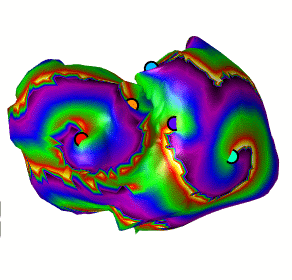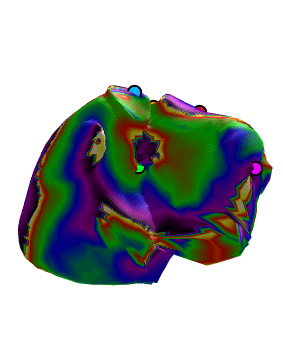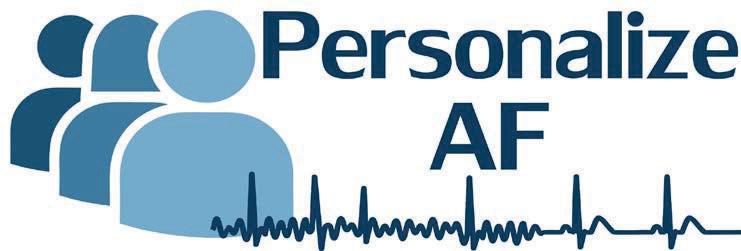Making some progress
Vaccination and my rotor algorithm seem to be moving on.
Hello everyone! I hope you all are okay in this convulsive times. I must say that I am quite optimistic about making through this pandemic soon with all these new vaccination campaigns running in Europe. So hold on mates! The end is near. I am also quite glad to see that my ESR peers are making much progress on their respective projects. In this post I am talking about my progress on the rotor detection algorithm I introduced in this post.
In the last month I ultimated the last details of the algorithm itself and I started to focused on the parameter study. As many other algorithms, this one contains a set of parameters that must be optimized to get a good performance. In my case, I chose to reduce as much as possible the number of parameters to be optimized by stablishing some reasonable assumptions. In this way I could make the algorithm’s behavior more understandable and based the optimization on theoretical bases.
In order to assess the performance of the algorithm for the different parameters combinations, I had first to arrange a dataset with known rotor locations. Initially, this dataset included only simulations but right now I am starting to test the algorithm on patient data too. You can imagine that labelling AF simulations looking for rotors must be an exhausting task, and it is. But I could fulfilled it making use of my new app: The rotor Inspector. I include below a screenshot of the interface. There you can check that I am not an expert on making apps in MATLAB, but still it was fun to code and it made the work much easier.

With all the simulations labelled, I started to look for proper metrics to assess the performance of the algorithm and optimize the parameters based on them. At the end, I went for the rotor histogram correlation. This measures the level of agreement between the labelled rotors and the detected rotors by the algorithm. I also could stablish nice relationships between the parameters in order to keep the performance of the algorithm high (according to my metric and data of course). With the optimized set of parameters the algorithm’s behavior seems to be better than the one already implemented in my lab, so I am quite happy about that. But again, as an image is always better than a thousand words, I also included an example of a simulation with many rotors. The colored dots in the figure are the rotor estimates of the algorithm. I think it looks pretty well :).


After all this process I am really looking forward to check the performance of the algorithm in patient data. I will let you know about this as soon as I can, in the meantime do not forget to follow the progress of all the ESR students involved the project by checking all the official sites. See you soon.
Carlos Fambuena
